The long-awaited, highly-anticipated third entry in the Bravely Default series, Bravely Default II has officially released. This latest Square Enix game brings all the magic that players fell in love with the first two entries and ups the ante even further to make it a challenging, but oh-so fun JRPG. This is our review of Bravely Default II.
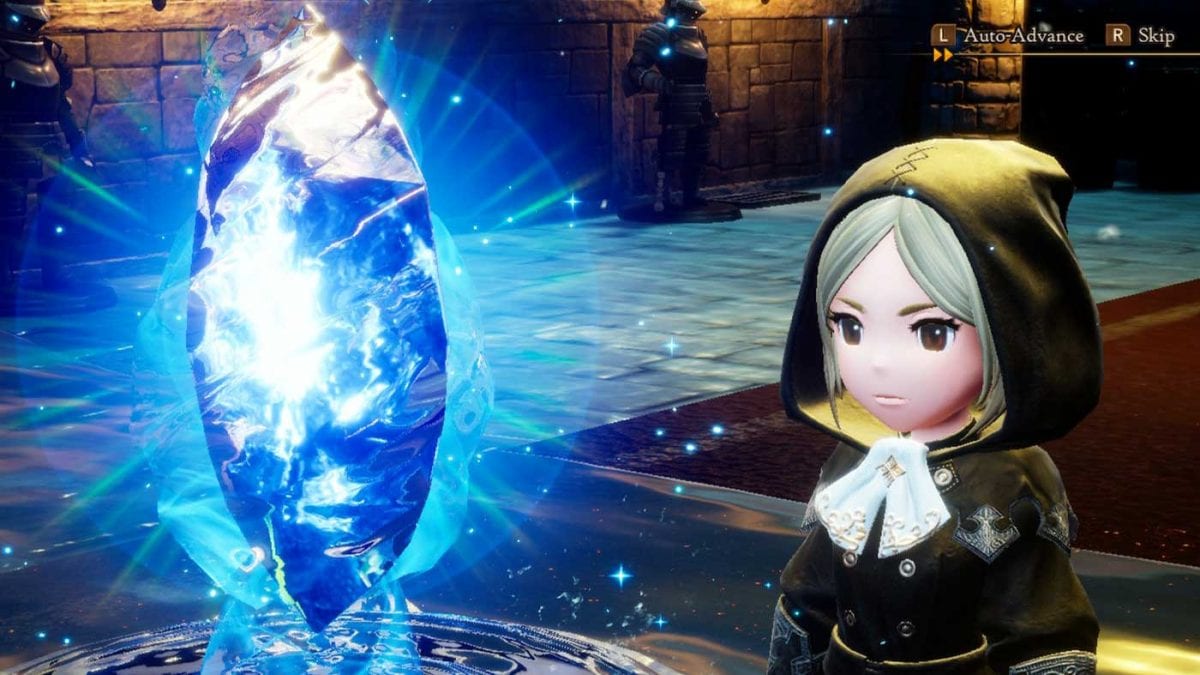
A Beautiful, Epic Return to the World of Bravely Default
About 9 years ago, Square Enix and Silicon Studio introduced the gaming world to a new JRPG turn-based franchise known as Bravely Default. It became a critical and financial success, as players purchased over 1,000,000 copies for the Nintendo 3DS. The next game in the series, Bravely Second: End Layer (2015-2016), while still a mostly well-received game didn’t live up to expectations set from the first, primarily due to a lacking story.
Now, Square Enix has returned to the Bravely Default series, with Claytechworks at the helm, intent on creating a quality sequel that would live up to its groundbreaking predecessor. With Bravely Default II, they’ve done just that and set the bar for any other games to come in the franchise.
In Bravely Default II, you start out as a pirate named Seth (The only character whose name can change, primarily for online purposes.) who washes up on shore after a shipwreck at sea. Before he ends his days in a watery grave, he’s saved by fate to be an integral part of the salvation of the continent and its various kingdoms. When he arrives on the beach, he’s met by Gloria, a princess of the destroyed kingdom of Musa, Elvis, a scholar in search of Asterisks to decrypt an old book, and Adelle, a mercenary searching for her lost sister. These four heroes. band together to find the four elemental crystals, fire, earth, wind, and water in order to save and restore order to the world. However, there are forces that stand in their way who are corrupting and destroying the land with asterisks and misuse of the crystals.
I found myself really enjoying the story of Bravely Default II from the first moments of the game. Sure, it was a bit formulaic throughout in the fact that the premise revolved around going from place to place to find the crystals, only to be greeted with a kingdom in danger of collapse after these crystals had gone haywire. However, it never bothered me. Instead, I found myself being fully invested in the development of each character, both as a member of the party and the NPCs that were interacted with, and the insane twists I never saw coming.

Throughout their journey, you really get to know these characters and see their bond start to grow. Bravely Default II employs cutscenes for characters to discuss situations and how they’d plan on handling them. They go further after the cutscenes with Party Chat to flesh out more details behind plans and to even share personal stories and details from their lives. These interactions really helped to understand these characters and served as a vehicle to develop characters and grant them perspective. I really enjoyed this part of the game, as it pulled back the curtain behind these characters. These scenes offered some of the funniest and most interesting exchanges in the game, mainly because the characters would talk about really anything, much like I feel like any band of friends would do on an adventure. I was often really excited when I saw the “Party Chat” button on the top right corner, because I knew I was always in for a fun bit of character and story development.
Another aspect of the story that made the tried-and-true macguffin-type adventure feel nuanced were the twists and turns that I personally never saw coming. Despite Bravely Default II’s seemingly family-friendly demeanor, the game’s story features all manner of back stabbings, betrayals, murders, demon-possessing, and corruption that make it feel far more darker than I initially expected. At first, Bravely Default II felt very goody-two-shoes, but the longer I played the game, the more I witnessed crazy story moments that left me completely shocked. It’s definitely a major improvement from the second game’s story and I felt it actually surpassed the first Default’s story. It’s just that enjoyable and so very unpredictable, at times.
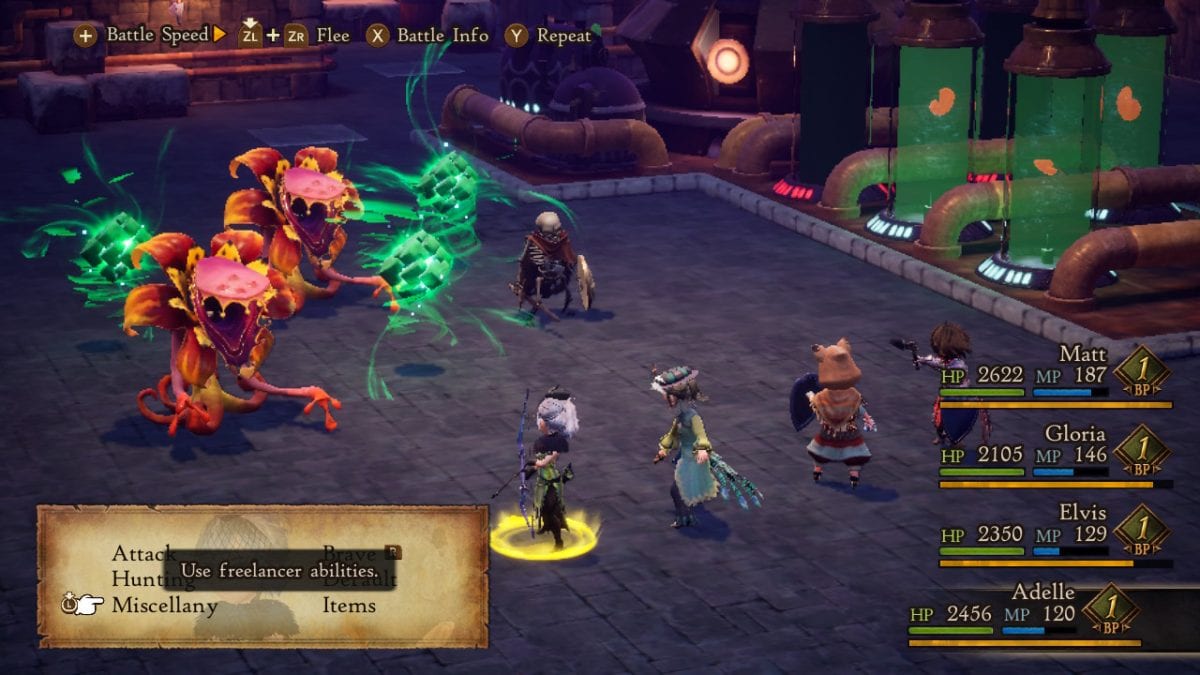
Strategic Combat, Unforgiving Bosses, and Tons of Grind
While the story, it’s many side quests, and party chats make for a wonderful gaming experience, it’s the combat that truly kept me enthralled enough to pour over 60 hours into the game. Bravely Default II features the same gameplay style that players fell in love with all those years ago. It’s a traditional turn-based RPG, but features a unique mechanic that allows you to either save your turn (Default) in order to unload a flurry of actions (Brave).
Admittedly, I love any RPG that’s turn-based. It’s the style I grew up playing on so it holds a place near-and-dear to my heart. I often miss the days when Final Fantasy was turn-based but it made sense why it had to adopt a more fluid combat system.
Nevertheless, the unique combat system of Bravely Default II takes that traditional turn-based style that I love and adds a huge strategic wrinkle I never knew I needed. Every new encounter requires some manner of strategy, which I absolutely loved. With weaker enemies, I’d blow my entire stash of turns and go into debt just to throttle the enemies and end the encounter sooner. However, that method could prove to be costly at times, when I underestimated my enemies or wasn’t equipped with the right weapon to exploit their vulnerabilities. This often left me strapped for turns, waiting as I got pummeled by the opposition.
For the most part, these situations in the wild never proved too costly, but mostly managed to make encounters last longer than I’d have liked. I learned the hard way, though, that you absolutely cannot approach boss battles in the same way I approached encounters in the wild, because Bravely Default II will have no problem punishing you for overextending yourself or getting too excited.
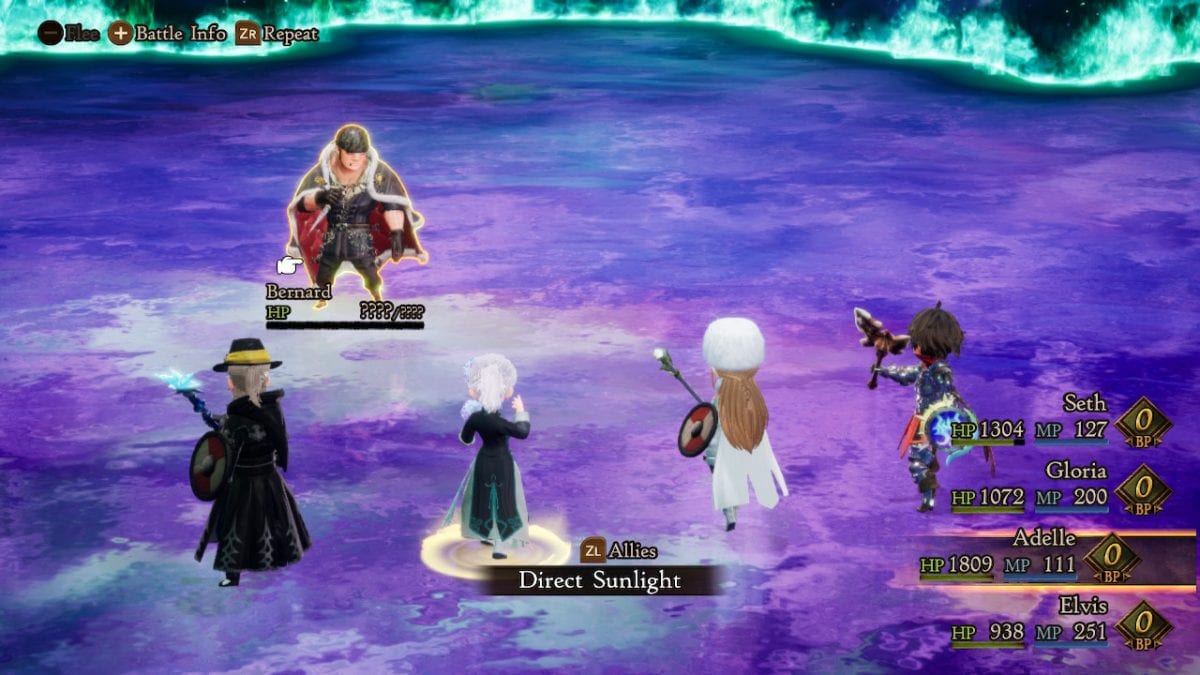
This is where the strategy of Bravely Default II really comes into play and forces players to change their normal approach to combat. Furthermore, it forces players to exercise patience, rather than going in guns blazing. Leroy Jenkins has no place in Bravely Default II. The reason is, there are a bevy of bosses riddled throughout this world and they are all unique, with their own movesets and strategies. Each one is tougher than the next and they all have every capability of destroying you if you make the wrong move. As players, we have to exercise patience by formulating a plan as you fight and noticing the patterns of your enemy. Then, enacting that plan until it either works and you win or it doesn’t and you have to try something else entirely.
The fact is, it’s highly likely that you’ll have to attempt boss battles multiple times, so save often. However, there is no shame in that, because every single boss fight is a learning experience. In fact, there were successive boss battles early on in Savalon that taught me so much and had me going back to the drawing board several times tweaking my approach. For starters, one boss used a wide arsenal of items to attack everyone in my party, and subsequently knock them all out. As someone who has a habit of never using items, outside of recovery items, it opened my eyes to the benefits of utilizing combat items, which helped me get the upper hand.
Furthermore, the other boss battle in Savalon, featuring a certain Berserker, had me wracking my brain on how to approach and win. It wasn’t until the 6 failure that I realized that perhaps my jobs and equipment weren’t right for this battle. After I switched some players to Vanguard and Monk and fiddled with my equipment a bit further I was able to get right back in the fight and lose, but I got closer to defeating him. When I finally did knock out that boss, though, it felt unimaginably amazing.
That’s the upside of boss battles. When a plan comes together and you’re finally able to defeat your foe, there’s just no other feeling like it. That’s why I absolutely embraced the challenge of Bravely Default II, because it all felt worth it in the end. No matter how much grind put into leveling up jobs and characters, of which there is a lot of, it always felt worth it when the boss that had been standing in your way for so long finally came crashing down.

Speaking of Jobs, Bravely Default II allows characters to switch their jobs using unique items known as “Asterisks”, they have a rather important story element, but aside from that they are imbued with powerful jobs that can be leveled up. Each new job will grant characters unique abilities relevant to that job type, i.e. physical abilities for Monks, powerful magic abilities for Black Mages, etc. Furthermore, they also add another element of strategy to every encounter. I remember when I got the Beastmaster job, I would intentionally keep all monsters alive with a sliver of health, just to be able to catch it and use it in battle at a later date. It was like my own little Pokemon mini-game and I loved every bit of it.
That’s the thing about Bravely Default II that I love so much, though. Every job and boss creates a unique and unforgettable experience. It forces you to think strategically, not just hack-and slash, and often rewards you for your hard work and dedication. Although, they could add more EXP and Job Points after especially tough foes, but that’s just a minor complaint, really. Overall, the entire combat system, including jobs, bosses, and strategy are what made this game an absolute joy for me.
Online, there seems to be some division on whether the combat system is too hard, but JRPGs are all about grind. I can’t think of a game I loved that didn’t require countless hours of level-grinding. It’s just the nature of the beast. Once you accept that and embrace the combat, the time just flies by and the next thing you know you’re annihilating a boss and wondering why you ever had trouble with them in the first place.
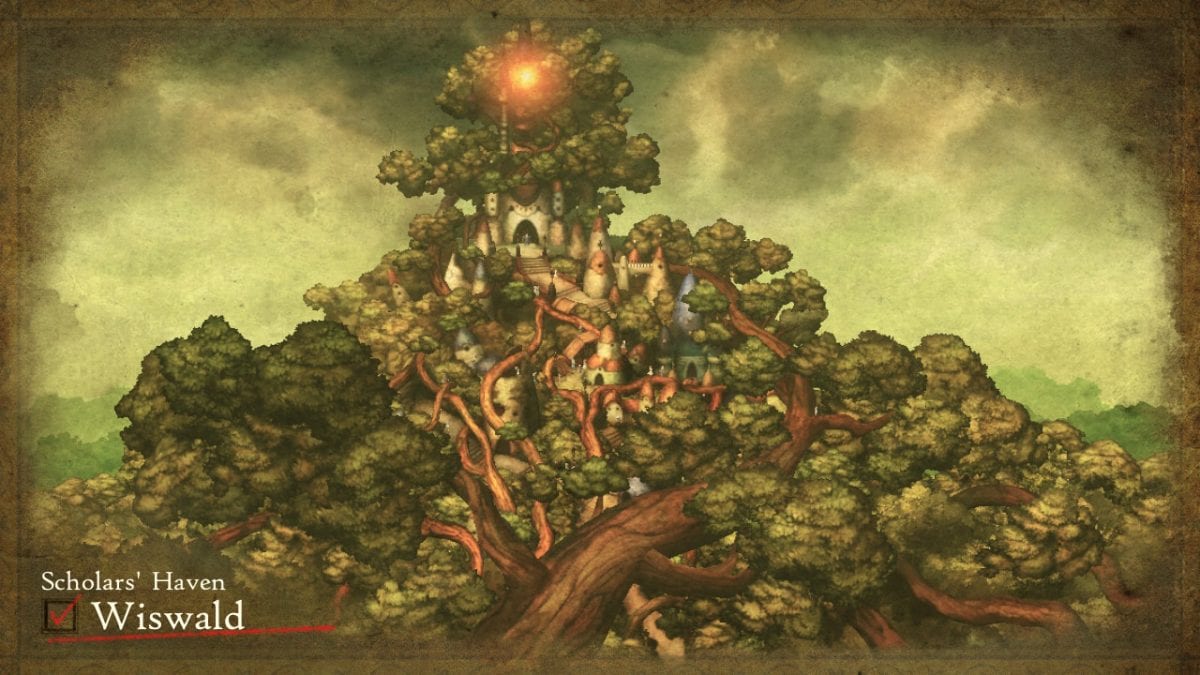
Breathtaking Artistry at Its Finest
From the moment I turned on Bravely Default II, I was blown away with the artistry found throughout the game. What got me were the seemingly hand-drawn backdrops, unique and lush environments, and the somewhat chibi, yet uber expressive character designs. With every new part of the world explored, came a new piece of art to appreciate. It’s a testament to the attention to detail and passion that went into making this game.
Additionally, the music is just as fantastic and relatable to every single moment and theme/mood of the environment. Bravely Default II incorporates a tracklist that feels very reminiscent of the renaissance era. However, the composer Sound Horizon created various adaptations of this style of music to fit every situation. My favorite, of which, was when I activated a Special ability and the music would ramp up for a set amount of time. I’d often activate the Specials just to hear the music over actually needing it for the actual encounter.
While the soundtrack may not be as all-encompassing as other Square Enix games like Final Fantasy VII Remake, it heightened my experience in Bravely Default II and had me humming high-speed guitar sequences for days.
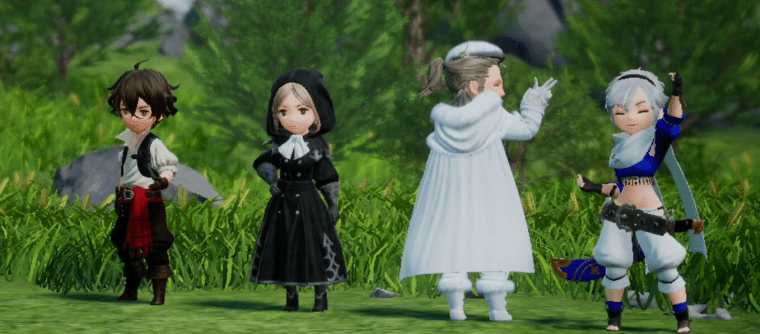
Should You Play It?
The bottom line is that if you’re a fan of the turn-based style of JRPGs, Bravely Default II is well-worth your time. It’s not easy and requires a considerable amount of grind, but the grind is outweighed by the glory felt in triumph. Plus, the combat system is easy to learn and oh-so fun when you fully embrace it and get into the flow of the game, which doesn’t take long. That said, I would’ve liked a way to mute the characters in battle, because they often got way too repetitive and the music, alone, would’ve been fine for me.
On a story aspect, Bravely Default II includes a really fascinating, whirlwind of a story. It has a tendency to feel a bit holier-than-thou and almost sickeningly positive, but it’s really just a facade. Bravely Default II incorporates so many dark themes and actions, with so many unpredictable twists, it’s hard to really anticipate what will happen next.

